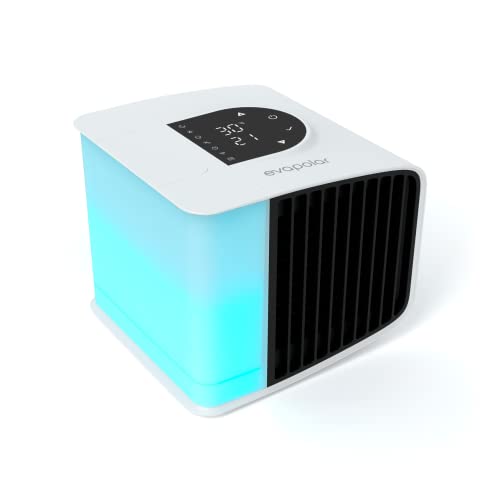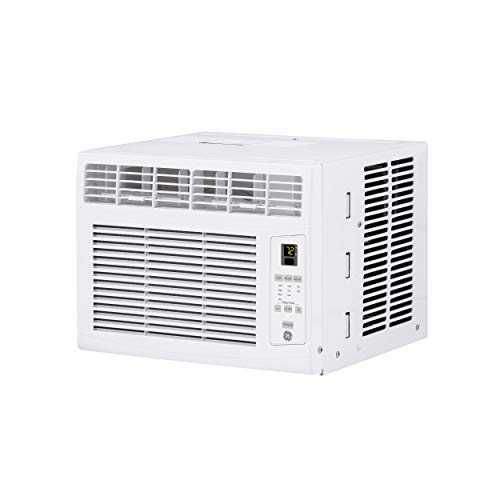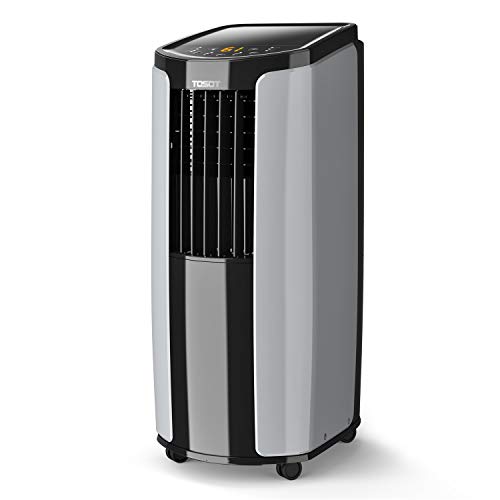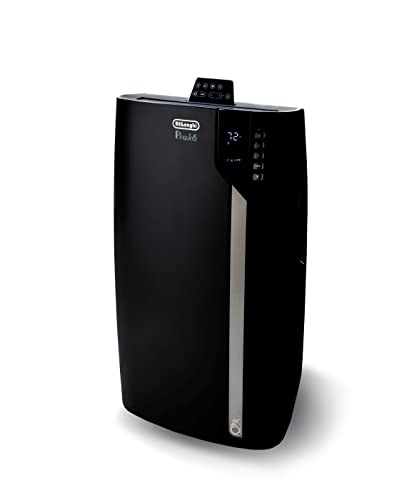One reason that portable units have quickly become some of the market’s best air conditioners is their versatility. Venting a portable air conditioner without a window presents a unique challenge, especially during the hot summers when cooling your living space becomes a necessity. Portable air conditioners are a versatile solution for climate control in spaces without traditional windows, but they require proper ventilation to function efficiently. This article explores practical solutions to vent your unit using a sliding door, ceiling and more, ensuring your environment remains comfortable without compromising the unit’s effectiveness.
Key Takeaways_
- Portable air conditioners can be vented through sliding doors, walls, and ceilings.
- The easiest method is through a sliding door with a vent kit.
- Venting a portable AC unit through a wall or ceiling panel requires making a hole with the same diameter as the exhaust hose.
Understanding Portable Air Conditioning Venting
Portable air conditioning units operate by pulling in warm air from your space, cooling it over condenser coils, and then recirculating the chilled air back into the room.

Learning how to use a portable air conditioner effectively involves understanding the importance of proper venting to ensure optimal performance.
The process also involves expelling excess heat and water vapor through an exhaust hose, necessitating adequate ventilation.
Without venting this hot air outside, the unit would merely circulate warm air, diminishing its cooling efficiency and leading to increased temperature and humidity levels in your living space.
If your AC is not cooling as expected, knowing how to fix a portable air conditioner can help you identify and resolve issues such as clogged vents or improper venting.
Venting Methods
Exploring various venting methods is crucial for finding a solution that fits your space and portable unit.
Whether it’s through a door, wall, ceiling, or an unconventional outlet like a dryer vent or chimney, each method has its considerations regarding installation, efficiency, and permanence.
Understanding these options will help you make an informed decision on how to best vent your portable air conditioner.
Sliding Door Venting
Venting through a sliding door is a popular option for those with patio or balcony doors. A vent kit specifically designed for sliding doors can be installed, allowing the exhaust hose to pass through a vent panel fitted into the door opening.
Ensuring a tight seal around the panel is crucial to prevent warm air from re-entering the space, maintaining the desired temperature and efficiency of your portable air conditioner.
Wall Venting
Creating a vent hole in an exterior wall offers a permanent solution for venting a portable air conditioner.
This method involves drilling a hole several inches in diameter to accommodate the AC vent hose. Care must be taken to avoid structural beams and electrical wiring.
warning
Before drilling into your wall, check for studs and any electrical wiring. Drilling through studs can weaken the house’s structure, and drilling through wires can cause electrocution.
Sealing the vent with a sturdy vent cover ensures a tight seal, preventing leaks and maintaining the integrity of your building’s insulation.
Ceiling Venting
For rooms with a drop ceiling or accessible attic space, ceiling venting can be an effective method. A ceiling vent kit allows the exhaust hose to connect to ceiling vents, directing the hot air into an unoccupied ceiling space.
STAT: Leaks, holes, and poorly connected ducts cause the average house to lose about 20–30% of the air moving through the duct system. (source)
This method requires careful installation to ensure that the vent hose is securely attached and that the ceiling panel can support the weight of the hose.
Dryer Vent Method
Utilizing an existing dryer vent is a convenient option for venting a portable air conditioner. However, it’s essential to ensure that the diameter of the dryer vent is compatible with the AC’s exhaust hose.
A tight seal around the connection point is crucial to prevent any backflow of warm air into the space.
Chimney Venting
An unused chimney can serve as an effective exhaust vent for a portable air conditioner. By attaching the AC vent hose to the chimney, warm air can be directed upwards and out of the living space.
This method requires ensuring that the chimney is clean, unobstructed, and not in use for other purposes to avoid safety hazards.
DIY Venting Solutions
For those with a knack for creativity and hands-on solutions, DIY venting options can be tailored to unique spaces.
Custom brackets, sturdy metal shelving units, or homemade vent panels can be constructed to fit specific needs.
insider tip
Experts recommend that the best way to find a spot to drill into the wall is by checking the building’s architectural plan.
These solutions often require a bit of ingenuity and a trip to hardware stores for supplies but offer a personalized approach to portable air conditioner venting.
Choosing the Right Venting Method
Selecting the appropriate venting method depends on various factors, including the layout of your space, the type of portable air conditioner unit you have, and whether you prefer a temporary or permanent solution.
Considerations such as ease of installation, the potential for structural modifications, and the need for a tight seal to maximize efficiency should guide your decision.
Enhancing Efficiency and Safety
Regardless of the chosen venting method, enhancing the efficiency and safety of your portable air conditioning system is paramount.
Regular maintenance, such as cleaning the venting hose and ensuring the unit is properly ventilated, can prevent overheating and energy waste, much like when cleaning leaves out of an AC.
Additionally, using dehumidifiers in humid climates and ensuring the use of extension cords meets safety standards can further optimize your portable cooling experience.
Incorporating an AC air exchanger can also improve indoor air quality by exchanging stale, indoor air with fresh, outdoor air, further enhancing the comfort and efficiency of your portable air conditioning system.
In the end, venting a portable air conditioner without a window is entirely feasible with the right approach and tools. From sliding door kits to innovative DIY solutions, the options are varied and can accommodate most living spaces and office spaces.
By ensuring proper ventilation, maintaining a tight seal, and considering the environmental impact of your chosen method, you can enjoy efficient cooling throughout the summer months without compromising the comfort of your indoor environment.

























